#naval history
Text
youtube
53 notes
·
View notes
Text





Grumman TBF / TBM Avenger
#grumman tbf avenger#ww2 photo#ww2 aircraft#ww2 aviation#ww2 history#ww2 planes#ww2#naval aviator#naval history#naval aviation
34 notes
·
View notes
Text
In his 1956 book The Marlinspike Sailor, marine illustrator Hervey Garrett Smith wrote that rope is “probably the most remarkable product known to mankind.” On its own, a stray thread cannot accomplish much. But when several fibers are twisted into yarn, and yarn into strands, and strands into string or rope, a once feeble thing becomes both strong and flexible—a hybrid material of limitless possibility. A string can cut, choke, and trip; it can also link, bandage, and reel. String makes it possible to sew, to shoot an arrow, to strum a chord. It’s difficult to think of an aspect of human culture that is not laced through with some form of string or rope; it has helped us develop shelter, clothing, agriculture, weaponry, art, mathematics, and oral hygiene. Without string, our ancestors could not have domesticated horses and cattle or efficiently plowed the earth to grow crops. If not for rope, the great stone monuments of the world—Stonehenge, the Pyramids at Giza, the moai of Easter Island—would still be recumbent. In a fiberless world, the age of naval exploration would never have happened; early light bulbs would have lacked suitable filaments; the pendulum would never have inspired advances in physics and timekeeping; and there would be no Golden Gate Bridge, no tennis shoes, no Beethoven’s fifth symphony.
“Everybody knows about fire and the wheel, but string is one of the most powerful tools and really the most overlooked,” says Saskia Wolsak, an ethnobotanist at the University of British Columbia who recently began a PhD on the cultural history of string. “It’s relatively invisible until you start looking for it. Then you see it everywhere.”
— The Long, Knotty, World-Spanning Story of String
#ferris jahr#the long knotty world-spanning story of string#history#prehistory#marine history#naval history#textiles#clothing#agriculture#architecture#sculpture#botany#ethnobotany#stonehenge#giza pyramid complex#moai#hervey garrett smith#saskia wolsak#string#rope
3K notes
·
View notes
Text
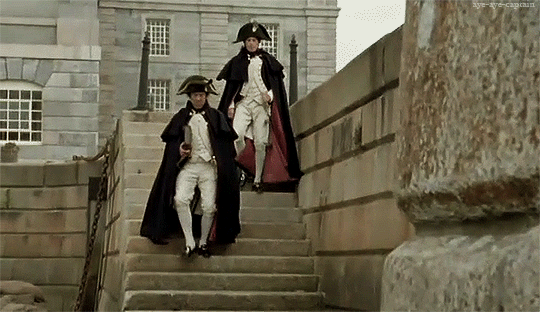
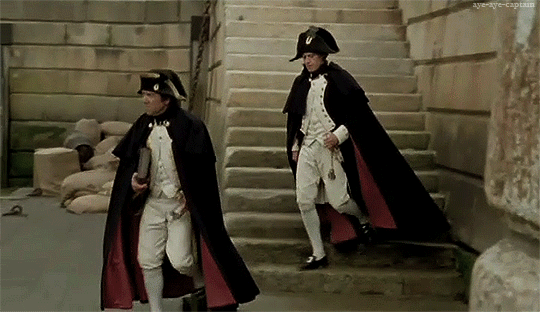
Looking majestic af | Horatio Hornblower & Edward Pellew | Hornblower (The Frogs and The Lobsters)
#hornblower#horatio hornblower#edward pellew#ioan gruffudd#robert lindsay#hornblower/pellew#hornblower series#age of sail#perioddrama#Hornblower: The Frogs and The Lobsters#periodedit#perioddramasource#naval officer#age of sail media#naval history#aye-aye-captain gifs#historical fashion#perioddramaedit
369 notes
·
View notes
Text

A few Fresnel lenses from my visit to the National Museum of the Great Lakes! This one is a fourth-order lens from the lighthouse on Ojibwa Island, Lake Michigan, made in 1891.
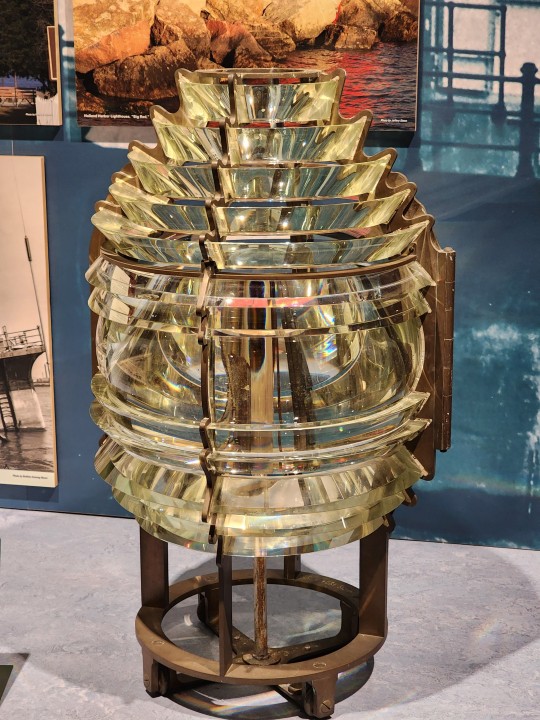
A cute little fifth-order lens, which was used in Sandusky Harbor, Ohio, in 1891.
No first-order Fresnel lenses were used on the Great Lakes, and only five second-order lenses were placed. One of them was in the Spectacle Reef Lighthouse on Lake Huron in 1873, now in the museum:


My photography doesn't give a true sense of scale; that second-order lens is huge.
There is also a model of the lightship Huron, which is now a museum ship you can visit.
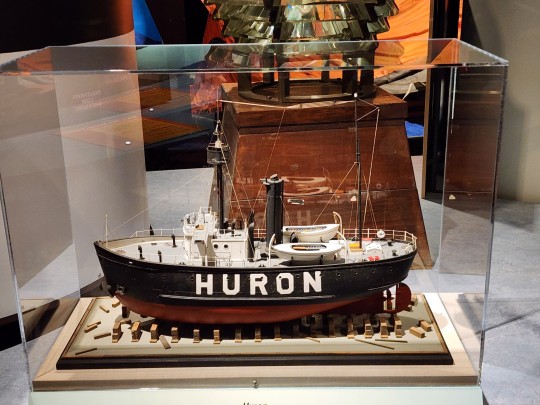
#great lakes#lighthouse#fresnel lens#naval history#age of sail#age of steam#national museum of the great lakes#lightship
461 notes
·
View notes
Text
"Kill them with kindness." WRONG. Prepare for boarding!

#kill them with kindness#is this anything#age of sail#naval history#boarding#naval battle#nelson boarding the san josef at the battle of cape st vincent
451 notes
·
View notes
Text
Congrats old chap

[Microfilm Caird Library/original private collection]
211 notes
·
View notes
Text
Recovering the Queer History of Britain’s Navy in the Age of Sail
If you missed this great talk from the Royal Museums Greenwich, the recording is available! From their YouTube channel:
What is the queer history of the Royal Navy in the age of sail? How did sailors break their society’s rules about sex and gender? Did they enter into same-sex relationships? Did they act in other ways that men ‘weren’t supposed to’ and what were the consequences? Is it possible to learn more about these sailors’ lives and why is it so important to do so?
Dr Seth Stein LeJacq (New York Institute of Technology) investigates sexual cultures at sea, discipline and military justice. This includes a long string of naval sex scandals, beginning with the 1698 trial of Captain Edward Rigby.
More Maritime History and Culture Seminars
Dr Seth Stein LeJacq's website
youtube
270 notes
·
View notes
Text

This is not a painting. One of my favorite historical photos of all time. The photograph was taken in 1911 by Francis James (FJ) Mortimer FRPS (1874-1944) a pioneer of pictorial photography. The sea his favorite subject, captured the shipwreck Arden Craig, a three-mast wheat ship that crashed into the rocks with nine feet of water after the captain became disorientated in heavy fog.
#francis james mortimer#historical#historical photos#arden craig#naval history#naval photography#1911#early 1900s#1900s
220 notes
·
View notes
Text
James Fitzjames the Burlesque Dancer
"He took a leading role in amateur dramatics, attending several rehearsals before, on 28 October 1833, he starred in a burlesque with his friend John Boyd and ‘some army chaps’. It is not surprising that a flamboyant character like Fitzjames, who was a natural mimic, would be attracted to the world of greasepaint. The play was called Chrononhotonthologos, the most tragical tragedy that ever was tragedized by any company of tragedians. It is an extraordinary play which must be overdue revival. In 1833 it was already about 100 years old, having been written by Henry Carey allegedly as a satire at the expense of Queen Caroline and Robert Walpole. John Boyd was cast as captain of the guard and Fitzjames was cast, in drag, in the lead role as Fadladinida, Queen of Queerummania. Fitzjames spent the whole day ‘getting rigged for the Queen … in women’s clothes all bediamonded and bepearled’. The large athletic officer must have made a fine sight as he ostentatiously sat through the first amateur performance of The Heir at Law by officers of the garrison, which he watched from a box among the audience. Then it was his turn to go backstage to prepare for his role in Chrononhotonthologos…
…Fitzjames said that he had ‘never laughed so much in my life’.
After this risqué performance, it must have been difficult for the three captains to envisage failing to pass for
lieutenant this popular young officer, who must have been the talk of the garrison and the ships at Malta. Two weeks later he was examined again for seamanship and it seems that this time he passed as he was awarded his Mate’s Warrant the following day."
James Fitzjames: the Mystery Man of the Franklin Expedition by William Battersby (2010), Chapter 5
169 notes
·
View notes
Text
The Raoul (de Chagny) Navy: An Exploration of the Vicomte's Naval Background:
Our beloved Vicomte, Raoul de Chagny, is a young junior officer in the French Navy ("le Royale"), but this hardly gets much exploration. It's a detail that is often glossed over--I anticipate because Naval historians and Phans often do not have much Venn diagram overlap--until now. Let's just say my username is a Naval reference.
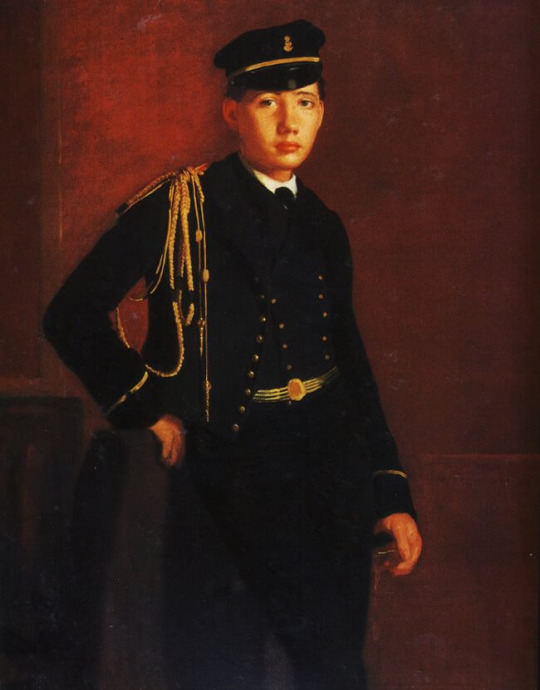
Note: the "Raoul Navy" is not my invention--our hilarious and wise "Phantom Dark Web" friends at Leroux Less Traveled (incl. @box5intern) came up with it, and I love it.
I've started digging into book Raoul and his Naval background and turns out we are missing out a whole lot about Raoul's character background if we don't dig into it. So I'm going to tell you what the book tells us and what that means. I'm going to give you the overall pieces up front, and then explain:
Raoul looks very young and feminine (except for his "little" mustache, which he effectively has grown to prove that he can)--and everyone treats him like a baby
Raoul at this point has already completed three years of Naval training including a world tour, so he is fairly experienced and even worldly for his age. He is described in the French as a "cadet", but he would likely be a sub-lieutenant at this point since he has graduated from the Naval Academy.
He's on a six month leave before going on a very dangerous mission to recover remains of a lost Arctic mission--a mission he himself is unlikely to return from.
And everyone still treats him like he's a baby (especially the old dowager widows), even though he has had quite a bit of life at this point--so he has something to prove.
What we know about Raoul and the Navy (Here is the English):
"He was admirably assisted in this work first by his sisters and afterward by an old aunt, the widow of a naval officer, who lived at Brest and gave young Raoul a taste for the sea. The lad entered the Borda training-ship, finished his course with honors and quietly made his trip round the world. Thanks to powerful influence, he had just been appointed a member of the official expedition on board the Requin, which was to be sent to the Arctic Circle in search of the survivors of the D'Artois expedition, of whom nothing had been heard for three years. Meanwhile, he was enjoying a long furlough which would not be over for six months; and already the dowagers of the Faubourg Saint-Germain were pitying the handsome and apparently delicate stripling for the hard work in store for him."
We also learn in another paragraph that the de Chagnys had admiral in the family, so the Naval connection is likely a family business for second sons. Raoul is a second son, so a career as a military officer would have been a distinguished career for him.
Borda: First ship
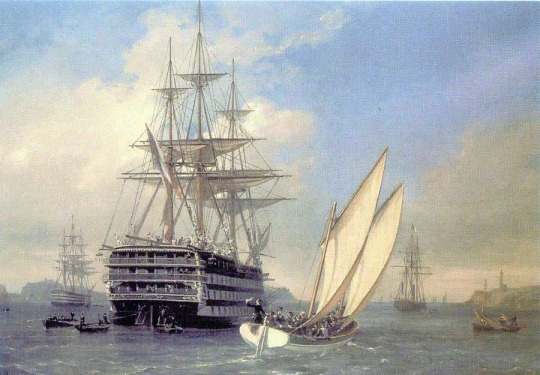
Brest is the main port of the French Navy and home of the Ecole Navale (or French Naval Academy. In the 20th Century it moved, but Brest is still, along with Toulon, a major naval base)
According to the French: Le jeune homme entra au Borda, en sortit dans les premiers numéros et accomplit tranquillement son tour du monde (Note that the French calls him a "young man", not a lad)
The Borda is traditionally the training ship of the French Navy, and there have been six of them. This would have been a cadet/midshipman cruise for Raoul. He would have been on the ex-Valmy, an 120-gun ship of the line, which became the Borda training ship in 1864.
The Borda is also the ship of the Ecole Navale (French Naval Academy)—this means that Raoul attended the academy.
The Naval Academy is two years in Brest, and then their third year is the World Tour—so that timing also aligns with where we are in the book. Raoul would have begun at the academy at 18, and he is at the start of the book, 21 years old.
After the Borda, which he completed with honors, he did an uneventful world tour.
This would have been his third year, still as a midshipman.
He could have been assigned to any ship for this training cruise—possibly a cruiser (the d'Estang is pictured below in 1884 in Algiers), which did long range missions. Note: Their max speed was about 15 Knots (which is a very respectable speed that some warships still transit).
This world tour cold have been as far east as what is now Vietnam, or through the Suez--but likely near French colonies.

With influence, he is assigned to the Requin expedition.
French: Grâce à de puissants appuis, il venait d'être désigné pour faire partie de l'expédition officielle du Requin, qui avait mission de rechercher dans les glaces du pôle les survivants de l'expédition du d'Artois, dont on n'avait pas de nouvelles depuis trois ans.
The Requin was a real ship in the Mediterranean fleet, but did not go on its first mission until 1885, which means that this is a deliberate or unintentional oversight of either Leroux himself or his narrator. The Requin was a steel hull—and the Artois was actually a 18th century Royal Navy ship so this piece is a complete fabrication. However, Arctic missions at this time were frequent and tended not to go well.
However, Raoul could also be excited about getting to go on a new steel-hulled ship. The Redoutable was already in commission—commissioned in 1876. Most of the rest of the fleet at this point were ironclads.
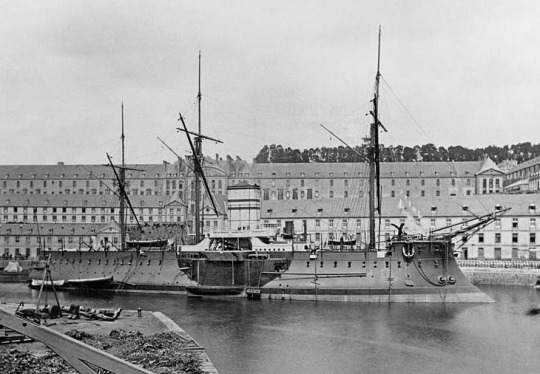
#naval history#phantom of the opera#raoul de chagny#vicomte de chagny#amwriting#phandom#military history#warships#poto#gaston leroux#the raoul navy#french navy#le royale#raoul navy
298 notes
·
View notes
Text
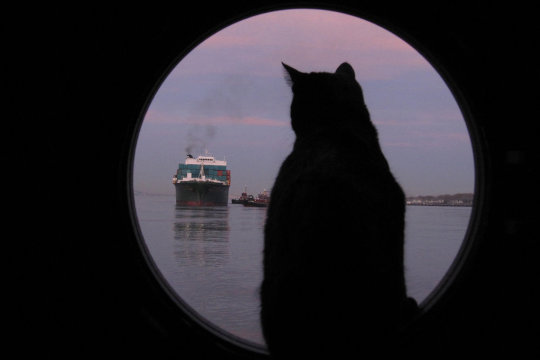



Ship's Cat Chiclet - the Mascot of the Mary A. Whalen (1938) a retired oil tanker, Brooklyn, New York
#naval history#ship's cat#chiclet#mary a whalen#oil tanker from 1938#new york#modern mascot#ship's cat sunday
6K notes
·
View notes
Text
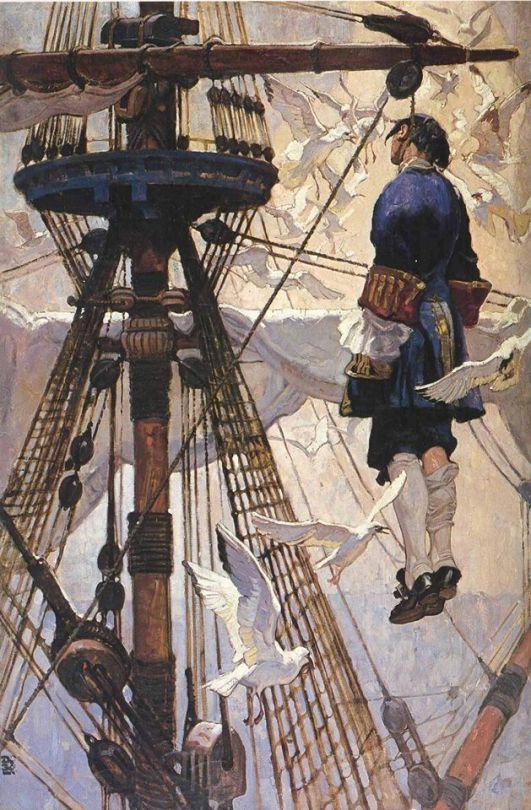
Captain Pike, Dean Cornwell (1892-1960)
I'm in love with this dramatic painting of a ship's officer facing Age of Sail-era justice, which was sent to me by @habemuscarnificem. After much searching online, and seeing this credited as an illustration for every maritime story from Treasure Island to Moby-Dick (neither of which involve anyone being hanged from the yardarm), I came across the painting's title, Captain Pike. However, I'm having a hard time finding out who Captain Pike was, or whether he was a real or fictional sea captain. Age of Sail Tumblr, can you help me out?
@ltwilliammowett
@clove-pinks
@benjhawkins
@ anybody else who knows their boat stories
Thank you so much! Fair winds and following seas to you all.
#dean cornwell#captain pike#age of sail#nautical#pirates#mutiny#20th century art#20th century illustration#age of sail fiction#maritime art#maritime fiction#adventure fiction#historical fiction#naval history#nautical history#art history#piratecore#cw death
328 notes
·
View notes
Text



Naval Dress Sword from the British Empire dated to the 1900's on display at Discovery Point in Dundee, Scotland
This sword belonged to Captain William Colbeck of the SY Morning, who led the Discovery Relief Expedition in 1902 - 1903. He would return again a year later to help free the RRS Discovery from the ice it was trapped in accompanied by Captain Harry McKay and the RRS Terra Nova.
Photographs taken by myself 2024
#naval history#sword#art#british empire#20th century#victorian#discovery point#museum#dundee#barbucomedie
102 notes
·
View notes
Text




Jared Harris as Captain Anderson ⏐To the Ends of the Earth (2005)⏐ 2/?
#Jared Harris#To the Ends of the Earth#Captain Anderson#To the Ends of the Earth 2005#perioddrama#periodedit#perioddramasource#age of sail#naval officer#age of sail media#naval history#aye-aye-captain gifs
267 notes
·
View notes
Text
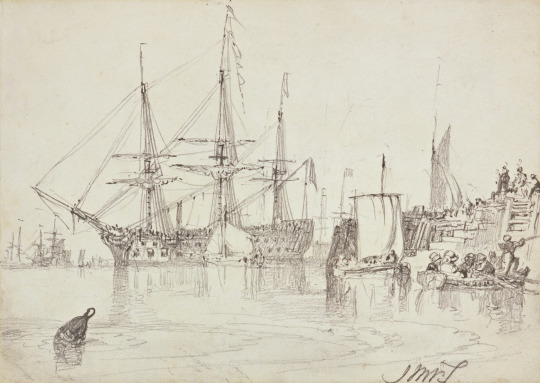
Joseph Mallord William Turner, Man of War.
#age of sail#man of war#royal navy#joseph mallord william turner#jmw turner#tall ship#art#the sea#harbour#maritime history#naval history
146 notes
·
View notes